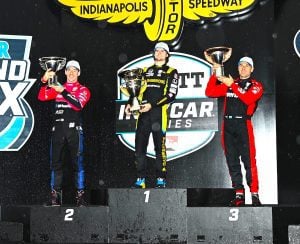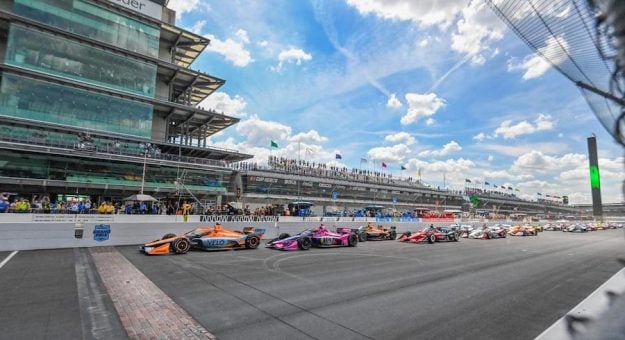As the GMR Grand Prix celebrates its 10th running on May 13, the event has become a special part of the month-of-May festivities at Indianapolis Motor Speedway.
It was Saturday, May 10, 2014, when the first NTT IndyCar Series road course race at Indianapolis Motor Speedway was run with Simon Pagenaud winning the Grand Prix of Indianapolis.
At that time, the response to having a road course race just two weeks prior to the Indianapolis 500 was mixed.
Loyalists feared another Indy car race at the legendary track would dilute interest in the Indy 500.

“There was a lot of universal sense that we can’t do that because May is only about the Indianapolis 500 and another race would dilute the 500,” Penske Entertainment CEO Mark Miles recalled. “I never felt that way.
“I believed as the 500 grows, it is a better way of promoting IndyCar and vice-versa. We pushed and came up with the idea of having a grand prix on the opening weekend. Part of selling it was to have it on network television for all three weekends of action.”
The race became a popular way for fans in Indiana and nearby states to see an IndyCar race at IMS for an affordable price compared to the massive, international audience that pays big money to experience the Indianapolis 500.
Since that time, a family-friendly crowd has brought lawn chairs and blankets and staked out a spot on the many viewing mounds to watch the wild action in the track’s infield road course section.
Specific grandstands that have a great view of the turns entering and exiting the road course also draw a crowd.
The grand prix generally attracts an estimated crowd between 35,000 to 50,000 fans. That would be a healthy audience at many street races and short ovals on the schedule.
Miles took over management of IndyCar and Indianapolis Motor Speedway prior to the 2013 month of May. What he saw, led to the creation of the grand prix.
“I grew up in Indianapolis and have always been a fan of the Indianapolis 500-Mile Race and appreciated the Indianapolis Motor Speedway,” Miles said. “I was on the board of directors for the company for a year and then I went to work there in 2013, so you can imagine the feeling of being a kid in a candy story; behind the desk in the CEO’s office for the first time when we opened the first of three weekends of action to celebrate May.
“You have all these feelings of anticipation and excitement.
“I went outside and looked, and we had about 5,000 people there and a nice antique car show, and we had some practice.
“I felt a deep sense of disappointment.
“The next week, we had qualifying and I don’t think we had any bumping that year and I wasn’t overly impressed by the crowd. Finally, we got to race weekend and it is always pretty sensational.”
Miles decided it was time to break from tradition.
One year later, the fans came out to witness a major change in the month-of-May schedule with a road course race replacing a day-long practice session on the big oval.
“I bet we had 30,000 people for the weekend,” Miles said of that first Grand Prix of Indianapolis. “That doesn’t fill the Indianapolis Motor Speedway but compared to 5,000 that we might have had for Opening Day, we really could not grow.
“It had to be an improvement over the 5,000 that we had for the opening weekend before.”
